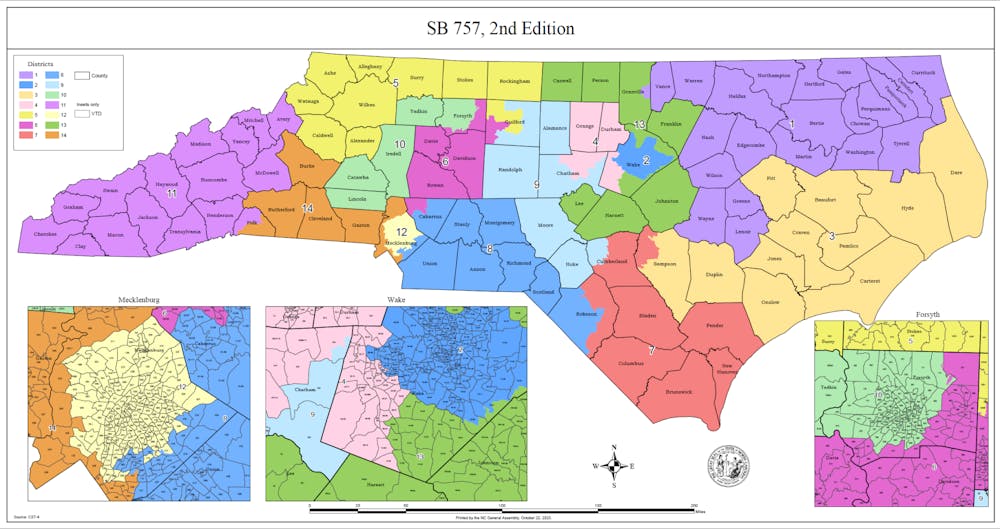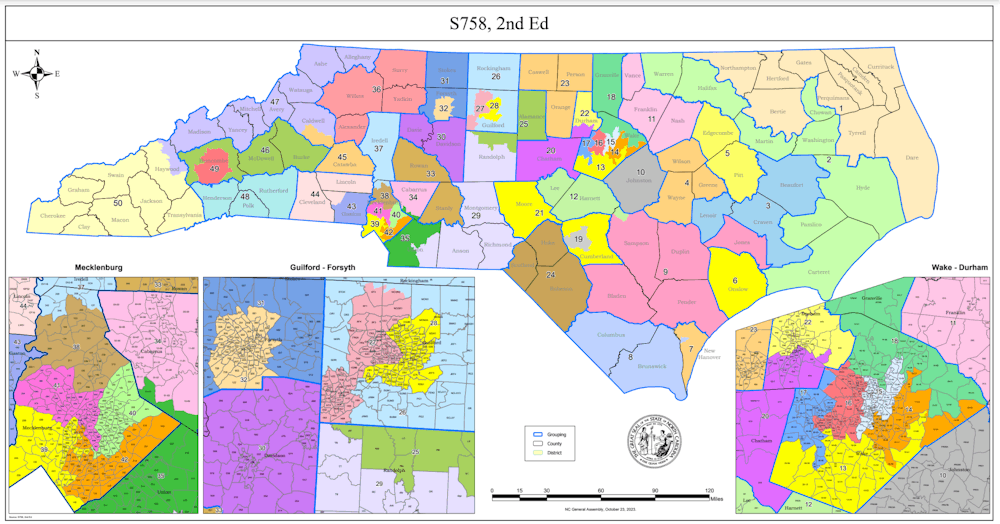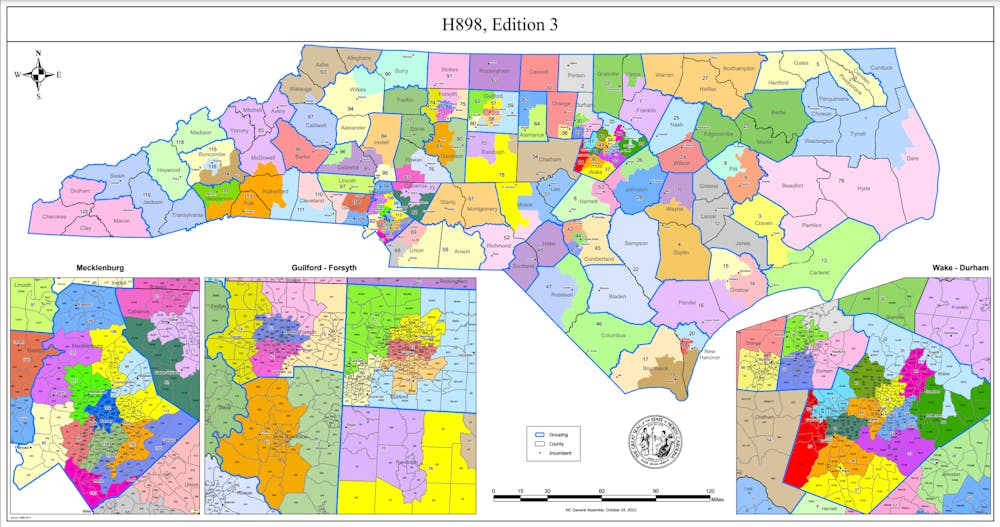The North Carolina General Assembly passed new congressional and state legislative maps Wednesday that will likely give Republicans three additional seats in the U.S. House of Representatives following the 2024 election.
The new maps will replace the remedial maps enacted by the N.C. Supreme Court in 2022, after they ruled that the maps passed in 2021 were too skewed to be used. After Republicans regained a majority on the court, the ruling was reversed, opening up the opportunity for Republicans to draw new maps skewed in their favor.
The congressional map used in the 2022 midterm elections gave North Carolina a split of seven Democrats and seven Republicans in the U.S. House. The new map, Senate Bill 757, favors Republicans in 10 districts and Democrats in three, with one district being a toss-up.

Since 2011, six congressional and state legislative map versions have been enacted, some of which were overturned as partisan gerrymanders.
Under SB 757, Democratic U.S. Reps. Kathy Manning, Jeff Jackson and Wiley Nickel are likely to lose their seats. Rep. Valerie Foushee, a Democrat who currently represents Duke in Congress, was left in a relatively safe district. An alternative map that was released on Oct. 18, Senate Bill 756, would have placed her in a heavily Republican district.
Quantifying Gerrymandering, a nonpartisan research group at Duke, found that the map was “more gerrymandered and less responsive” than the maps that were struck down in 2021. The nonpartisan Gerrymandering Project at Princeton University gave SB 757 an overall grade of “F”, including an “F” rating for partisan fairness and competitiveness, and a “C” for geographic features.
“North Carolina is now one the most egregiously gerrymandered states in the country,” Eric Holder, former U.S. attorney general and current head of the National Democratic Redistricting Committee, told The Washington Post.
Mac McCorkle, Law School ‘84 and professor of the practice at the Sanford School of Public Policy, explained that the U.S. Supreme Court has given “carte blanche to state legislatures” to gerrymander.
“Both Republicans and Democrats, whoever is in power, can really systematically gerrymander, be able to draw maps that are very precise in how they proceed. Back when I was doing it 20 years ago, you couldn't get that precise,” McCorkle said.
He added that the Democratic vote is largely “wasted” because they are concentrated in ten counties that Republicans can isolate.
Redrawn state legislature maps
The new state legislative maps, for the N.C. House of Representatives and the N.C. Senate, will also likely result in strong Republican majorities. The Republicans currently hold veto-proof supermajorities in both chambers.
According to an analysis by the John Locke Foundation, the new state Senate map creates 28 Republican-leaning seats, 17 Democrat-leaning seats and five toss-up seats. The state House map creates 69 Republican-leaning seats, 48 Democratic-leaning seats and three toss-up seats.
Republicans will need to win 72 seats in the state House and 30 seats in the state Senate to maintain their veto-proof supermajorities.
As a result of a landmark 2019 U.S. Supreme Court ruling, state courts have been conferred with the power to rule on partisan gerrymandering decisions.
According to McCorkle, the U.S. Supreme Court has essentially “said that it’s basically a political question” and that the N.C. Supreme Court’s conservative majority has taken on the same position.
Get The Chronicle straight to your inbox
Sign up for our weekly newsletter. Cancel at any time.


What comes next
McCorkle believes that the courts may interpret the maps as a form of racial gerrymandering in “taking away the voice of Black people more generally than just Democrats,” referring to precedent from a U.S. Supreme Court decision in June that struck down an Alabama voting district on the basis that it denied representation to African American voters.
McCorkle reasoned that, besides a potential court ruling on a racial gerrymander, no legal recourse exists due to the U.S. Supreme Court’s decision. He believes that the North Carolina Democrats should prioritize regaining control of the state Supreme Court.
“[The NC Democrats] are down so low now that just by the nature of the staggered elections, there's not a chance to get a majority before 2028 at the earliest,” he said.
McCorkle pointed out that an aggressive gerrymander has its own drawbacks, as gerrymandering alone may not result in reduced turnout for Democrats. If a wave election occurs in favor of the Democrats in reaction, “a very ambitious thing like a 10-4 map to the Republicans … could come back to bite them.”
Samanyu Gangappa is a Trinity sophomore and local/national news editor for the news department.

